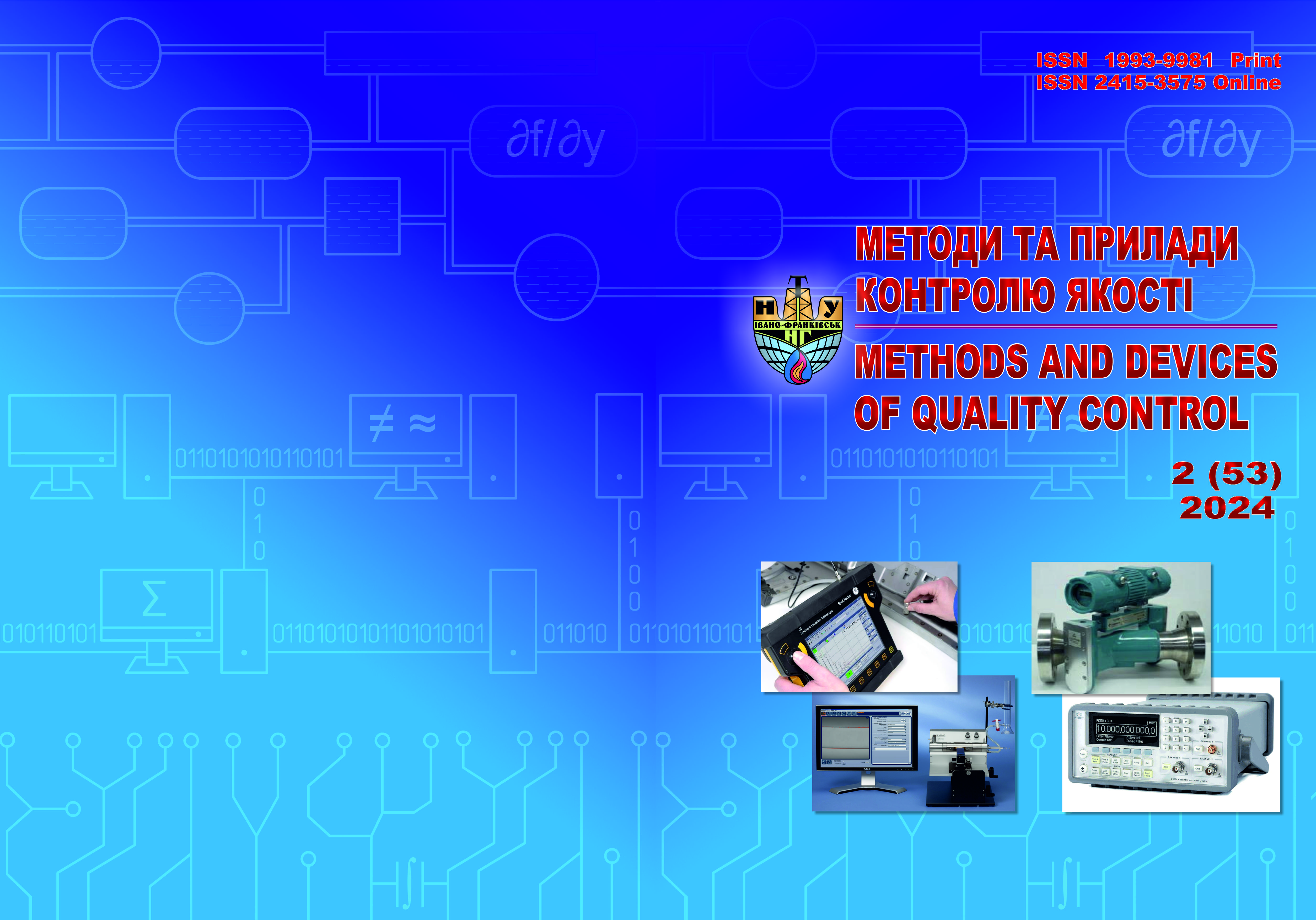АВТОМАТИЗАЦІЯ КЕРУВАННЯ КОРИСНИМ ВАНТАЖЕМ БЕЗЕКІПАЖНОГО НАДВОДНОГО КАТЕРА ДЛЯ ДОСЛІДЖЕННЯ МОРСЬКОГО СЕРЕДОВИЩА
DOI:
https://doi.org/10.31471/1993-9981-2024-2(53)-69-80Ключові слова:
безекіпажний надводний катер, корисний вантаж, дослідження морського середовища, система керування, системний підхідАнотація
У статті відображено роль безекіпажних надводних катерів у задачах вивчення й використання морського середовища та його захисту від антропогенного впливу. Встановлено, що з кожним роком розширюється перелік корисного вантажу, який використовують з борта таких суден при дослідженні морського середовища. Це вимагає подальшого розвитку і вдосконалення систем автоматичного керування як безекіпажними суднами, так і керування їхнім корисним вантажем. На основі системного підходу до завдань, що виконують безекіпажні надводні судна, запропоновано класифікацію їх корисного вантажу з позицій подальшої автоматизації та показана доцільність його розміщення у спеціальних електрифікованих платформах – автоматичних контейнерах спеціальної конструкції. Запропоновано концепцію модульної автономії для створюваного дослідницького комплексу «Безекіпажний надводний катер – Корисний вантаж», яка передбачає контейнерне транспортування, зберігання і застосування корисного вантажу. Це дає змогу уніфікувати конструкцію палубного обладнання катера та алгоритмічне забезпечення його системи автоматичного керування. Розроблено основні складові конструкції автоматичного контейнера спеціальної конструкції для палубного транспортування, зберігання і застосування підводних апаратів та розроблено узагальнений алгоритм автоматичного керування таким контейнером. Узагальнений алгоритм передбачає автоматичний випуск підводного апарата для виконання місії та його автоматичне повернення на борт катера. Розроблено основні складові конструкції автоматичного контейнера для палубного транспортування, зберігання і застосування одноразового безекіпажного літального апарата коптерного типу та розроблено узагальнений алгоритм автоматичного керування таким контейнером. Показано особливості реалізації концепції модульної автономії при автоматизації корисного вантажу, які мають враховувати контроль гідрокліматичних умов його застосування та необхідність побудови розвинених підсистеми сенсорів та підсистеми автоматичної діагностики обладнання безекіпажного надводного катера та його корисного вантажу. Системі автоматичного керування запропоновано будувати як багаторівневу, яка містить рівень діагностики технічного стану обладнання катера та корисного вантажу, рівень розгортання корисного вантажу у робочий стан, рівень забезпечення застосування корисного вантажу за призначенням, рівень згортання корисного вантажу багаторазового використання у початковий стан.
Завантаження
Посилання
Zhixiang Liu, Youmin Zhang, Xiang Yu, Chi Yuan. Unmanned surface vehicles: An overview of developments and challenges. Annual Reviews in Control.2016. Vol. 41. P. 71-93. DOI: 10.1016/j.arcontrol.2016.04.018
Seagoing Tools of Oceanography. U.S. National Science Foundation.URL: https://www.nsf.gov/geo/oce/whatis/tools.jsp
Exploration Tools. National Oceanic and Atmospheric Administration. URL: https://oceanexplorer.noaa.gov/technology/technology.html
Baldauf M., Kitada M., Raza Ali Mehdi, Dalaklis Dimitrios.E-Navigation, Digitalization and Unmanned Ships: Challenges for Future Maritime. Education and Training. Proceedings of INTED2018 Conference 5th-7th March 2018, Valencia, Spain. Conference Paper, March 2018. P.9525-9530. DOI: 10.21125/inted.2018.2374
Manuel A., Ramos R., Olivar G. and oth. Automatic measurement in the oceanographic vessel Hesperides. Conference: Instrumentation and Measurement Technology Conference, 2001. IMTC 2001. Proceedings of the 18th IEEE. Vol. 1. DOI: 10.1109/IMTC.2001.928841
A18D / AUV / Autonomous Underwater Vehicle. URL: https://www.ecagroup.com/en /solutions/a18-d-auv-autonomous-underwater-vehicle? gad_source=1&gclid=EAIaIQobChMIiZyM4MWcigMVTVWRBR0IYT2HEAAYASAAEgJqWPD_BwE
Yazdani A.M., Sammut K., Yakimenko O., Lammas A.. A survey of underwater docking guidance systems. Robotics and Autonomous Systems. 2020. Vol. 124. DOI: 10.1016/j.robot.2019.103382
R. Stokey et al. A docking system for REMUS, an autonomous underwater vehicle. Oceans '97. MTS/IEEE Conference Proceedings, Halifax, NS, Canada, 1997. Vol. 2. P. 1132-1136. DOI: 10.1109/OCEANS.1997.624151
Palomeras N., Ridao P. Autonomous Underwater Vehicle Docking Under Realistic Assumptions Using Deep Reinforcement Learning. Drones. 2024. Vol. 8(11). P. 673. DOI: 10.3390/drones8110673
Chao-Ming Yu, Yu-Hsien Lin. The docking control system of an autonomous underwater vehicle combining intelligent object recognition and deep reinforcement learning. Engineering Applications of Artificial Intelligence. Volume 139, Part A, January 2025. 109565. DOI: 10.1016/j.engappai.2024.109565
Autonomous underwater vehicle (AUV) deployment device. Patent China CN102826210B. URL: https://patentimages.storage.googleapis.com/77/ 59/1f/2dc2d44468213f/CN102826210B.pdf
Case DJI Avata. URL: https://for-extreme.com.ua/ua/accesories/
bags_cases/startrc-1118711-plastikovij-kejs-dji-avata?gc lid=EAIaIQobChMI0K2SsP-YigMVPxSiAx 2FtAP_EAQYCCABEgIM3vD_BwE&keyword=&utm_source=google&utm_medium=cpc [in Ukrainian]
Waterproof rack for DJI Mavic 2 Pro / Mavic 2 Pro. URL: https://aliexpress.ru/item/
html?sku_id=12000034989013274&spm=a2g2w.productlist.search_
results.17.5cc93f68i9Y6yl
Водонепроникний протиударний рюкзак для портативної сумки для зберігання дрона DJI Neo. URL: https://aliexpress.ru/item/1005007727831100.html?spm=a2g2w.productlist.rcmdprod.4.5cc93f68i9Y6yl&sku_id=12000042006655170
Dronehub is the autonomous game-changer for inspection and monitoring. URL: https://dronehub.ai/
DJI Docks. For Roads Less Traveled. URL: https://enterprise.dji.com/dock
Drone in a box with lightweight and maintenance-free motion plastics. URL: https://www.igus.com.ua/info/drone-in-a-box
Best Drone Docks in 2024.URL: https://www.flytbase.com/ blog/djicompatibl e-docking-stations
Drone Docking System. Updated: November 22, 2024. URL: https://xray.greyb.com/drones/docking-system-for-drones
Grlj C.G., Pranjić M. A Decade of UAV Docking Stations: A Brief Overview of Mobile and Fixed Landing Platforms. Drones. 2022. Vol. 6(1). P. 17. DOI: 10.3390/drones6010017
Blintsov V.S., Klochkov O.P. Generalized method of designing unmanned remotely operated complexes based on the system approach. Scientific journal «EUREKA: Physics and Engineering». 2019. Vol. 2 (21). P. 43-51. DOI:10.21303/2461-4262.201 9.00878
Fabiana Di Ciaccio, Salvatore Troisi. Monitoring marine environments with Autonomous Underwater Vehicles: A bibliometric analysis. Results in Engineering. 2021. Vol. 9. 100205. DOI: 10.1016/j.rineng.2021.100205
How Subsea Remotely Operated Vehicles (ROVs) Work For Ocean Research. – SubCImaging. URL: https://www.subcimaging.com/case-studies /how-subsea-remotely-operated-vehicles-rovs-work-for-ocean-research
Blintsov O., Sokolov V., Korytskyi V. Synthesis of precise automatic control system of a second order object in uncertainty conditions. ARPN Journal of Engineering and Applied Sciences. 2019. Vol. 14, Issue 6. P. 1218–1228. URL: http://www.arpnjournals.org/jeas/research_papers/rp_2019/jeas_0319_7671.pdf.
Jacopo Aguzzi, Laurenz Thomsen, Sascha Flögel and others. New Technologies for Monitoring and Upscaling Marine Ecosystem Restoration in Deep-Sea Environments. Engineering. 2024. Vol. 34.
P. 195-211. DOI: 10.1016/j.eng.2023.10.012
Miguel Álvarez-González, Paula Suarez-Bregua, Graham J. Pierce and Camilo Saavedra. Unmanned Aerial Vehicles (UAVs) in Marine Mammal Research: A Review of Current Applications and Challenges . Drones 2023. Vol. 7(11). 667. DOI: 10.3390/drones7110667
Balloon-borne surveys of the atmosphere. King Abdullah University of Science and Technology. 2015. URL: https://www.kaust.edu.sa/en/news/balloon-borne-surveys-of-the-atmosphere
Research vessel. URL: https://en.wikipedia.org/wiki/Research_vessel


.png)




